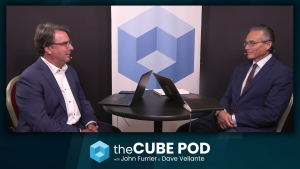In the Virtual/Cloud Age, Computing Services Replace Applications
![]() Virtualization is part of the strategy that internal IT needs to adopt for competing against Cloud services. A second important part of that strategy is to package and price what it provides as services. This requires rethinking by IT professionals who are used to thinking in terms of individual components of base infrastructure, hardware, networks, and applications.
Virtualization is part of the strategy that internal IT needs to adopt for competing against Cloud services. A second important part of that strategy is to package and price what it provides as services. This requires rethinking by IT professionals who are used to thinking in terms of individual components of base infrastructure, hardware, networks, and applications.
But often, attempts to explain these components to business leaders only confuses and, ultimately, annoys them. What they need to know in order to make decisions is the cost/benefit ratio for specific functions that support business activities. They seldom care about the details of components, such as servers and storage, networks, and software. And you as the CIO don’t really want your bosses involved in those decisions; that only encourages them to push their particular hobby-horses, which can end up forcing you to make decisions that increase costs without providing added business benefit.
What you need to do is package all those components as logical business services. These usually involve a lot of shared resources and may not divide neatly according to individual applications — one logical service may consume only some of the functionality of one application back in the data center, while another may use parts of multiple applications. And the services for one department may be different than those for another, even though they may have the same name. The basic financial application for sales, manufacturing, and accounting will have very different functions to meet the different needs of each of those departments.
Creating these logical services is vital because this is the way your end-users see computing. They don’t understand all those components, as any CIO who has tried to explain infrastructure investments to the CFO knows. And this is one of the big attractions of Cloud services to the CFO — he understands what he is buying.
![]() Even if IT does not charge end-users directly for the computing services they consume, it is also vital to price these services and develop a reasonably accurate breakdown of how much of each service each department, division, or other entity in the organization consumes. Obviously this involves a lot of estimation since all these services use shared physical resources. CIOs can seek help in how to make these estimates from senior management, and in particular from the CFO or an accountant, since they often have to make similar kinds of estimates to price products and determine the business value of investments.
Even if IT does not charge end-users directly for the computing services they consume, it is also vital to price these services and develop a reasonably accurate breakdown of how much of each service each department, division, or other entity in the organization consumes. Obviously this involves a lot of estimation since all these services use shared physical resources. CIOs can seek help in how to make these estimates from senior management, and in particular from the CFO or an accountant, since they often have to make similar kinds of estimates to price products and determine the business value of investments.
Then IT needs to create a menu of the services it provides for each functional unit in the enterprise, complete with price. This may seem to be a lot of extra work, but it allows IT to talk the language of business in meetings with senior management. And this is what the Cloud vendors bring to the table. Without this, the CFO is very likely to presume that IT is hiding things, which will make the CFO much more likely to choose the Cloud vendor, even when that may not be the better business choice. Gartner has been urging exactly this strategy on large enterprise CIOs for several years, and with the advent of Cloud service competition it has become imperative.
And finally, you need to pick your battles. Some services really belong in the Cloud. Others may best be provided as a combination of Cloud and internal service. You gain credibility and are more likely to become a trusted business advisor to your senior management by identifying which services are best kept in house and which are better provided by the Cloud and making appropriate recommendations before the Cloud vendors arrive on your doorstep.
A message from John Furrier, co-founder of SiliconANGLE:
Your vote of support is important to us and it helps us keep the content FREE.
One click below supports our mission to provide free, deep, and relevant content.
Join our community on YouTube
Join the community that includes more than 15,000 #CubeAlumni experts, including Amazon.com CEO Andy Jassy, Dell Technologies founder and CEO Michael Dell, Intel CEO Pat Gelsinger, and many more luminaries and experts.
THANK YOU









